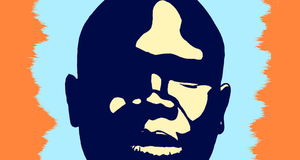Spiritual Autobiography and Dave Eggers' "What is the What"
By
2014, Vol. 6 No. 12 | pg. 1/4 | » AbstractSpiritual autobiographies have a long and rich history as a form of memoir, beginning at about 397AD with the release of Saint Augustine’s Confessions. Since this time, many spiritual works have evolved out of this tradition and are still being produced today. Although not labeled as such, Dave Eggers’ What is the What is a modern version of the spiritual autobiography, following the form and contextual aspects of many of its predecessors as it traces the journey of a Lost Boy and Sudanese refugee to America. This paper serves to compare the traditionally accepted spiritual autobiography with the modern interpretation of spiritual reflections in What is the What. Despite its recognizable roots in tradition, Eggers’ novel provides contemporary alterations to the spiritual narrative through its unresolved conclusion and exploration of such difficult issues as the Sudanese Civil War. The three main features that tie What is the What to a new form of spiritual autobiography are analyzed in this paper: (a) the slight deviation from the historical precedent established by writers such as Saint Augustine and Mary Rowlandson; (b) the distinct use of recognized life-writing traits in the speaker’s reflections and unique prayers to God; and (c) the alterations to the traditional narrative pattern through the presentation of unresolved problems. Spiritual autobiographies have a long and rich history as a form of memoir, beginning at about 397AD with the release of Saint Augustine’s Confessions. Since this time, many spiritual works have evolved out of this tradition and are still being produced today. Some of these memoirs have very clear religious messages and find interpretations of life without God devoid of meaning. Mary Rowlandson clearly exemplifies a strongly Christian interpretation of life’s events in her memoir, A Narrative of Captivity, as she catalogues her tumultuous experience held captive by a tribe of Native Americans through a series of acts of God. Although not labeled as such, Dave Eggers’ What is the What is a modern version of spiritual autobiography, following the form and contextual aspects of many of its predecessors as it traces the journey of a Lost Boy and Sudanese refugee to America. As an autobiographical novel, it exists uniquely as both fiction and nonfiction and is consequently, able to convey its message through a means not known to traditional spiritual autobiographies.Unlike traditional spiritual autobiographies, What is the What deviates from the established historic precedent, utilizing recognized life-writing traits including questioning prayers and reflections, and altering the traditional narrative pattern through the presentation of unresolved problems. The definition of a modern spiritual autobiography adhered to in this essay will demonstrate an evolution from the traditional writings of authors such as Augustine and Rowlandson and a development towards writing meeting the needs and expectations of modern readers through a firm foundation in the portrayal of reality. While these writers of the past focused on God as the primary subject and their relationship with God as a guiding theme, modern writers typically incorporate God into their analysis of particular events more subtly. God is no longer a central theme or primary player in the plot, but the introspective effects of both reflection and prayer create a more tangible presence of God that is in keeping with the reader’s experience of reality and not that of the supernatural. These alterations from the traditional spiritual autobiographical form and the attention to realistic details are essential to the development of the modern spiritual autobiographer. What is the What presents a slight deviation from the historical precedent established by spiritual autobiographers. Most traditional spiritual autobiographers adhere to the definition Augustine (2009) described in his Confessions, “When this lifelong search for an ultimate reality that gives meaning to one’s life in the face of evil, suffering, and death becomes the theme of the book, then the writer has created a 'spiritual autobiography'" (p. xi). This definition establishes the tradition of spiritual autobiography that What is the What and other forms of spiritual memoir follow. The story of Valentino is certainly structured as a “search for an ultimate reality” as the narrator looks back on his flight on foot from Sudan through Ethiopia to Kenya as a starving young boy and attempts to make sense of all of the atrocities he has witnessed. Valentino bears witness to the meaning of life found only through God despite standing in the “face of evil, suffering and death.” Despite losing his family, watching his village burn, and bearing countless acts of inhumane aggression, Valentino still reflects on his own actions during this time and frequently calls out to God. True to Augustine’s definition, Valentino bears witness to the meaning of life found only through God despite standing in the “face of evil, suffering and death,” which certainly becomes the theme of his book. With all requirements of Augustine’s definition undoubtedly met, Eggers fictionalized tale of Valentino Achak Deng should be classified as a spiritual autobiography, regardless of its status as a novel. Eggers’ autobiographical novel displays many similarities with both this definition and the structure in Augustine’s creation of one of the first spiritual autobiographies. Throughout his Confessions, Augustine frequently evaluates his life in the eyes of God and documents his conversion from a life of sin and riches to that of a modest and humble Christian. Eggers’ work, however, deviates from this traditional focus on God. Instead, the role of God is far subtler in the tale of Valentino’s survival. Although it certainly has its place, religion is utilized less frequently to evaluate Valentino’s daily experiences than in traditional spiritual autobiographies. Augustine’s entire work presents to readers as a prayer to God for penance, compassion, and strength. While these same prayers and requests are present, Valentino does not harp on God as the sole influencing factor in his situation. Instead, he presents a more modern interpretation of his relationship with God as an active choice to live a good life despite hardships for the sake of being a moral human being, not to achieve divine sainthood or heaven. In Book III, Valentino reflects on the many untimely deaths of his Sudanese friends and acquaintances after they have left the violent wars in Africa and finally provides readers with an explanation for the spiritual autobiographical form of his story. The calamities he experienced were not isolated to Sudan, but have followed for various reasons to America where unexpected forms of violence are neglected and consequently, inadvertently permitted. Despite surviving so many horrific events throughout the Sudanese Civil War, Valentino’s struggles are far from over as he hopefully attempts to build a better life in America, which the novel repeatedly presents as a near impossible feat. Yet, it is in this time of frustration at his continued state of crisis that Valentino provides a great insight into his faith, his relationship with God, and his reasons for telling his story: I do not mean to imply that these deaths were simply trials for me, for I know God would not take these people, would not take Tabitha in particular, simply to test the strength of my own faith. I will not guess His motivations for bringing her back to Him. But her death has proven to be a catalyst for me to think about my faith and my life (Eggers, 2006, p. 331). Unlike the traditional writers such as Augustine, this explanation for his reflections on his past is far from a conversion or even a confession. Although he acknowledges that the reasons he has chosen to reflect on his faith were due to occurrences that were out of his control, Valentino does not blame God or divine providence. In contrast to the spiritual autobiography of Augustine, which spends all of Book IX discussing the impact of his mother’s death on him and his choice to weep, Valentino humbly removes himself from the recent deaths, recognizing that such tragedies do not occur to make him feel or act a certain way. He is far more concise and easily yields to his inability to know the meaning of everything in his life, characteristics modern readers can appreciate and recognize. Although this explanation appears towards the end of the novel, it serves as a guide and example for the religious interpretation of both the proceeding and upcoming events. Eggers’ simple and open presentation of Valentino’s reflections on his faith and situation permit the reader to see religious meanings and draw connections where none is clearly labeled. One of the most obvious of these examples is Valentino’s tale of how he received his name, a classic story worthy of telling in various Christian writings: I asked Father Matong why this man was his favorite saint, and why he gave me his name…—I think you will have the power to make people see, he said. —I think you will remember what it was like to be here, you will see the lessons here. And someday you will find your own jailer’s daughter, and to her you will bring light (Eggers, 2006, p. 260). Nowhere in this novel does the speaker argue that he is a saint or that he is following the path to sainthood. Regardless, the tale of Saint Valentino firmly establishes the connection between the lives of the narrator and the saint. Such a short story has a strong purpose in spiritual autobiography, especially with the religious rhetoric in the words “power,” “see,” and “light,” which all point to something greater than oneself and one’s positions. Its presence provides another explanation for Valentino’s goals in sharing his story, “to bring light,” and reveals a spiritual interpretation of his ability to learn from such hardship. The story of Saint Valentino serves to directly compare the role and struggles of the narrator with those deemed saintly or holy. In his article titled, Metamorphoses of Spiritual Autobiography, Robert Bell explains the phenomenon of comparing one’s life to that of a saint in his or her spiritual autobiography, writing, “Ultimately all these lives are modeled upon the great patterns of Christian sainthood” (Bell, 1977, p. 108). Making such comparisons and building the plot structure around the somewhat familiar stories of saints grants the speaker a new authority.Continued on Next Page » Suggested Reading from Inquiries Journal
Inquiries Journal provides undergraduate and graduate students around the world a platform for the wide dissemination of academic work over a range of core disciplines. Representing the work of students from hundreds of institutions around the globe, Inquiries Journal's large database of academic articles is completely free. Learn more | Blog | Submit Latest in Literature |



















